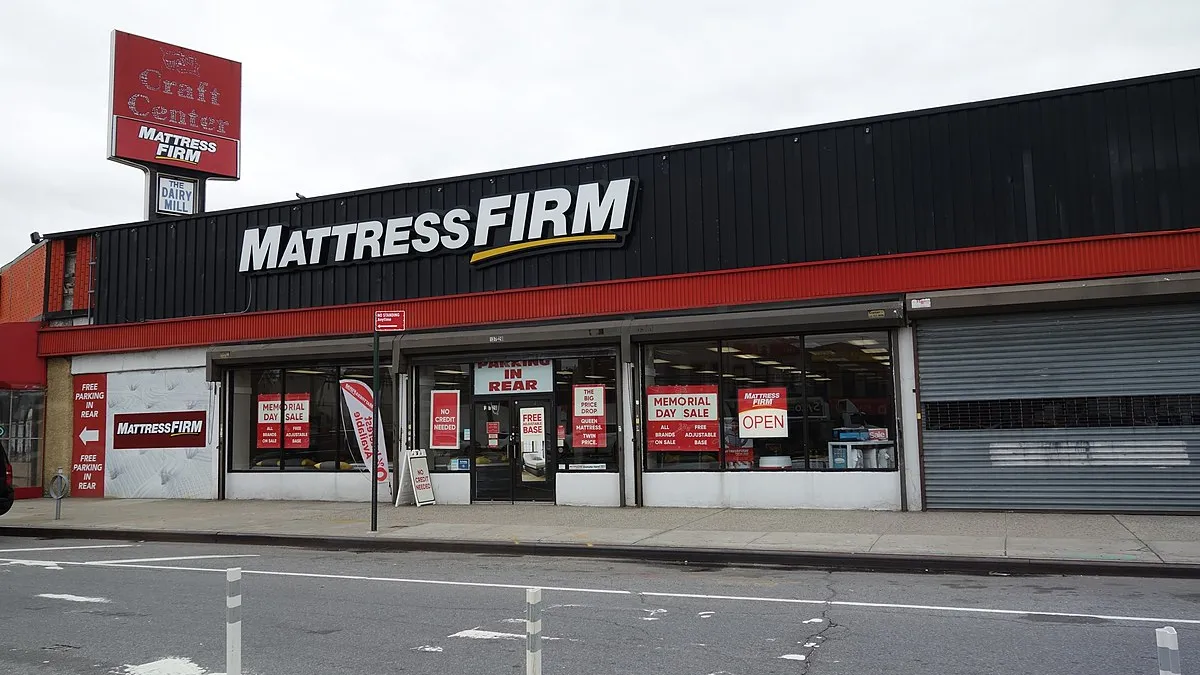UPDATE: October 18, 2018: About a week and a half after filing for bankruptcy, Mattress Firm on Tuesday filed a motion to close an additional 99 stores by the end of October, according to court documents. That's on top of 306 stores the company has sought to exit so far in Chapter 11. The retailer noted that closing the additional stores would save $1.2 million per month in rent and associated costs. The most recent closures put Mattress Firm nearly 60% of the way toward its goal of closing 700 stores in bankruptcy.
Dive Brief:
-
After filing for bankruptcy Oct. 5, Mattress Firm noted in a press release that it has received court approval for all first day motions, including access to an initial portion of its bankruptcy financing — up to $150 million, per court documents.
-
Mattress Firm's plan for store closures has also been approved by the court, allowing the retailer to shutter 209 underperforming locations (or those too close to other Mattress Firms) by the end of October, according to court documents.
-
The company also requested the authority to back out of an additional 97 store leases by that date. All told, the store closures would save the company $1.6 million per month in rent and associated costs, the company said. By the end of the process, Mattress Firm plans to close 700 stores, the company said at the time of filing.
Dive Insight:
So far, Mattress Firm's trip through bankruptcy seems to be moving along. The company's prepackaged plan was approved by the court and the retailer already has plans to pay back all creditors in full — an amount that totals $152.7 million, according to court documents. Also unusual is the speed with which the retailer hopes to make it through bankruptcy, citing estimates of just two months.
Mattress Firm's so far orderly and well-planned filing stands in direct contrast to the bankruptcy of Toys R Us, which fell into Chapter 11 unexpectedly (and right before the holidays last year) after a supplier panic and, once it moved to liquidate, left vendors with hundreds of millions of dollars unpaid.
Changes to suppliers were also mentioned in Mattress Firm's filing, but the retailer noted several other factors that pushed it into bankruptcy this month, including an insufficient presence in the high-end market, ineffective brand marketing and too many stores (over 3,200 upon entering).
"The primary reason we are here, your honor, is the company's liquidity," Bojan Guzina, an attorney at law firm Sidley Austin said in an audio file of a court hearing. "We were projected to run out of cash in October." In addition to revenue issues, Guzina cited the retailer's acquisition of Sleepy's and otherwise aggressive brick-and-mortar expansion plans as part of the problem.
"The second issue that we face … is too many stores," Guzina said. "There's really no sugar coating it."
Although the company filed with plans to close 700, that still leaves the company with well over 2,000 retail locations in the U.S. alone, and plenty of competition from startups like Casper and Tuft & Needle, which now has the full power (and cash) of one of the largest players in the mattress sector behind it after merging with Serta Simmons. (In fact, Serta Simmons was owed the most going into the Mattress Firm bankruptcy.)
Even if Mattress Firm comes out of the bankruptcy process smoothly, 700 stores lighter and two months after the date of filing, the company will still face significant challenges in a space that has become increasingly competitive. Ineffective brand marketing is not a problem that goes away after shedding unprofitable stores, and neither is insufficient presence in the high-end market.
Even if Mattress Firm figures out its numbers, the retailer will likely still have a lot of work to do to keep pace with the rest of the category.













